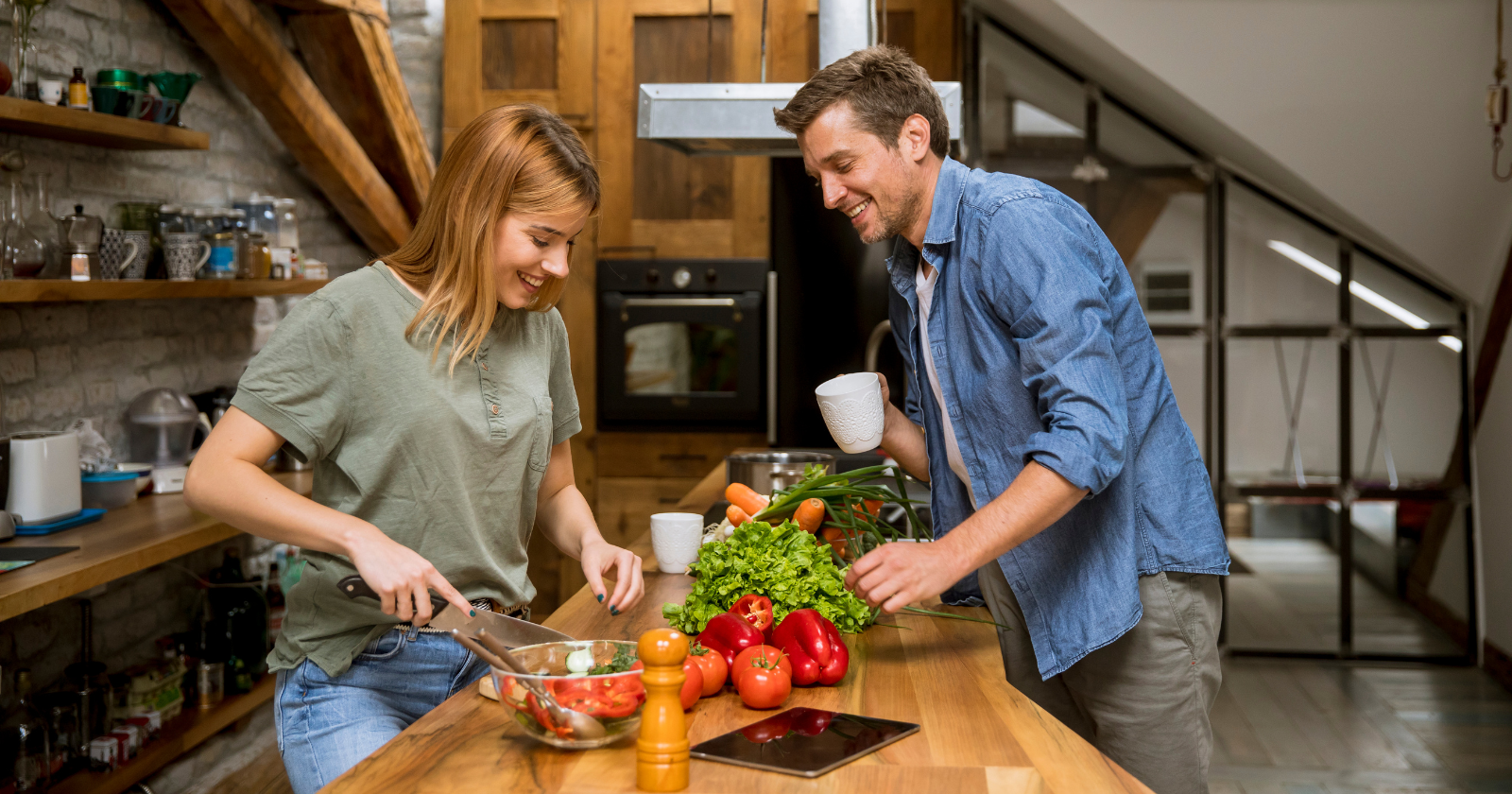If your goal is to get creative in the kitchen, say goodbye to bland vegetarian dishes
I used to think “creative” meant complicated.
If a dish didn’t have a mile-long ingredient list or a glossy photo with eight microgreens arranged just so, I assumed it wasn’t special.
Then I had a month where dinners were happening in 30-minute windows between nap times, yoga mat cleanups, and that witching-hour toddler shuffle.
Complicated wasn’t happening.
But I still wanted food that made my family say wow.
That’s when I started paying attention to the simple moves that make vegetarian food sing.
Real creativity comes from how you build flavor, choose textures, and finish a dish, not from how fancy the recipe name is.
And yes, you can absolutely make bold, joyous vegetarian meals without turning your kitchen into a lab.
Why vegetarian food gets called bland
Let’s call out the myth: vegetarian food isn’t bland. Under-seasoned food is.
What most people are tasting when they call a veggie dish “boring” is a lack of salt, acid, and heat (both temperature and spice), plus not enough contrast.
Think about a steamed broccoli floret. On its own, it’s watery and shy.
Roast that same broccoli at high heat until the edges blister, toss with a lemony tahini, shower with toasted almonds, and suddenly it’s the plate-stealer.
The vegetable didn’t change. The technique and finish did.
Another reason veggie meals fall flat? Fear of fat. If you’re skipping butter or meat, add other fats intentionally—good olive oil, tahini, coconut milk, nut butters, or a dollop of yogurt for creaminess.
As noted by cooking teachers everywhere (and synthesized so clearly by Samin Nosrat), great food is a balance of salt, fat, acid, and heat. If your plate is missing one of those, you’ll taste it.
Flavor starts with attention
Creativity in the kitchen is really creativity in your senses.
Do you taste as you cook? Do you know what “one more pinch of salt” does to tomatoes versus mushrooms?
That’s attention. I like to ask myself mid-cook: what’s the one move that would wake this up right now?
It could be a quick splash of red wine vinegar toward the end, scraping the browned bits (fond) with a squeeze of lemon, or blooming a spoon of curry paste in hot oil for 30 seconds before the coconut milk goes in.
Here’s my simple acid test: if a dish tastes flat, add acid before adding more salt.
Lemon juice, lime juice, a tiny splash of vinegar, pomegranate molasses, pickle brine—take your pick. Watch how the flavors pop.
And don’t underestimate umami. In vegetarian cooking, umami is your best friend.
Miso paste, soy sauce or tamari, mushrooms (especially shiitake), sun-dried tomatoes, Parmesan rinds (if you eat dairy), gochujang, nutritional yeast—all of these deepen the bass notes.
A teaspoon of white miso whisked into a pan sauce can be the difference between “meh” and “more, please.”
Cooking this way has taught me to slow down and listen.
It reminds me of something Rudá Iandê writes in Laughing in the Face of Chaos: “When we let go of the need to be perfect, we free ourselves to live fully, embracing the mess, complexity, and richness of a life that’s delightfully real.”
I’ve carried that into the kitchen.
The food doesn’t need to be flawless; it just needs to be alive.
Build a flavor map, not a recipe prison
I love recipes, but I cook from “maps.” Maps give me a direction and landmarks without handcuffing me to exact steps.
Here’s a map I use all the time:
- Base: an allium (onion, leek, shallot, scallion) + something aromatic (garlic, ginger, fresh chili). Sweat in oil with a pinch of salt.
- Body: choose your star—veg (broccoli, eggplant, cauliflower, peppers), legumes (chickpeas, lentils), or a grain (farro, quinoa, rice).
- Boosters: umami (miso/soy/gochujang), acid (vinegar/citrus), fat (tahini/coconut milk/olive oil), sweetness (maple/honey/dates) as needed.
- Herbs and heat: fresh herbs, ground spices, or a crunchy chili oil.
- Finish: something bright (lemon zest), something crunchy (nuts/seeds), something creamy (yogurt/tahini).
Ask yourself as you go: what’s my salt? what’s my acid? what’s my umami? what’s my crunch? If each answer has a character, the dish is already halfway to “wow.”
A marinade is another great map: acid + salt + fat + aromatics + a touch of sweet.
Lime juice + soy sauce + sesame oil + grated garlic/ginger + a pinch of sugar? That’s magic on tofu, mushrooms, or zucchini.
From self-judgment to play
The biggest block I see isn’t skill. It’s self-judgment. That voice that says: “You’re not creative,” “You’ll mess it up,” “Real chefs don’t cook like this.” Where did that come from?
Here’s a recent kitchen moment.
I was throwing together a carrot-lentil stew while my son was stacking Tupperware towers on the floor. I over-salted it.
Old me would’ve spiraled. Instead, I grabbed a potato, simmered it in the pot to soak up the excess, splashed in apple cider vinegar for balance, and finished with yogurt and herbs.
It turned out better than the original plan.
Cooking as everyday self-development
The kitchen is a mirror. If I rush, my food tastes rushed. If I’m curious, my food surprises me. If I’m tired, I keep it simple and let my pantry do the heavy lifting.
It’s also where I practice renegotiating my relationship with “good” and “bad.” Is a weeknight salad “good” because it’s green? Is a creamy pasta “bad” because it’s rich?
Those labels flatten the conversation and the flavor.
What if, instead, we asked: How do I want to feel after I eat? What does my body ask for tonight—warmth, crunch, brightness?
That’s when I realize cooking isn’t just about feeding people. It’s about feeding perspective.
Reading Laughing in the Face of Chaos reminded me that permission is powerful. I don’t need to follow a recipe or a rulebook to make a dish worthwhile. Same goes for life.
Final thoughts
If your goal is to get creative in the kitchen, the way forward isn’t learning twenty new techniques.
It’s learning to taste. Trust your senses. To play with salt, acid, fat, heat, and texture until a dish feels alive.
The brave part is letting go of perfection so you can actually hear what your food, and your body, are saying.
Tonight, try one new “finishing move.”
Toast a seed. Zest a lemon. Add a splash of vinegar. Swirl a spoon of miso into your pan sauce.
Then take a bite, and ask: what’s the one small thing that would make this even better?
You don’t need complicated to be creative. You just need attention, contrast, and a little courage to color outside the lines. That’s where the flavor, and the fun, begin.



